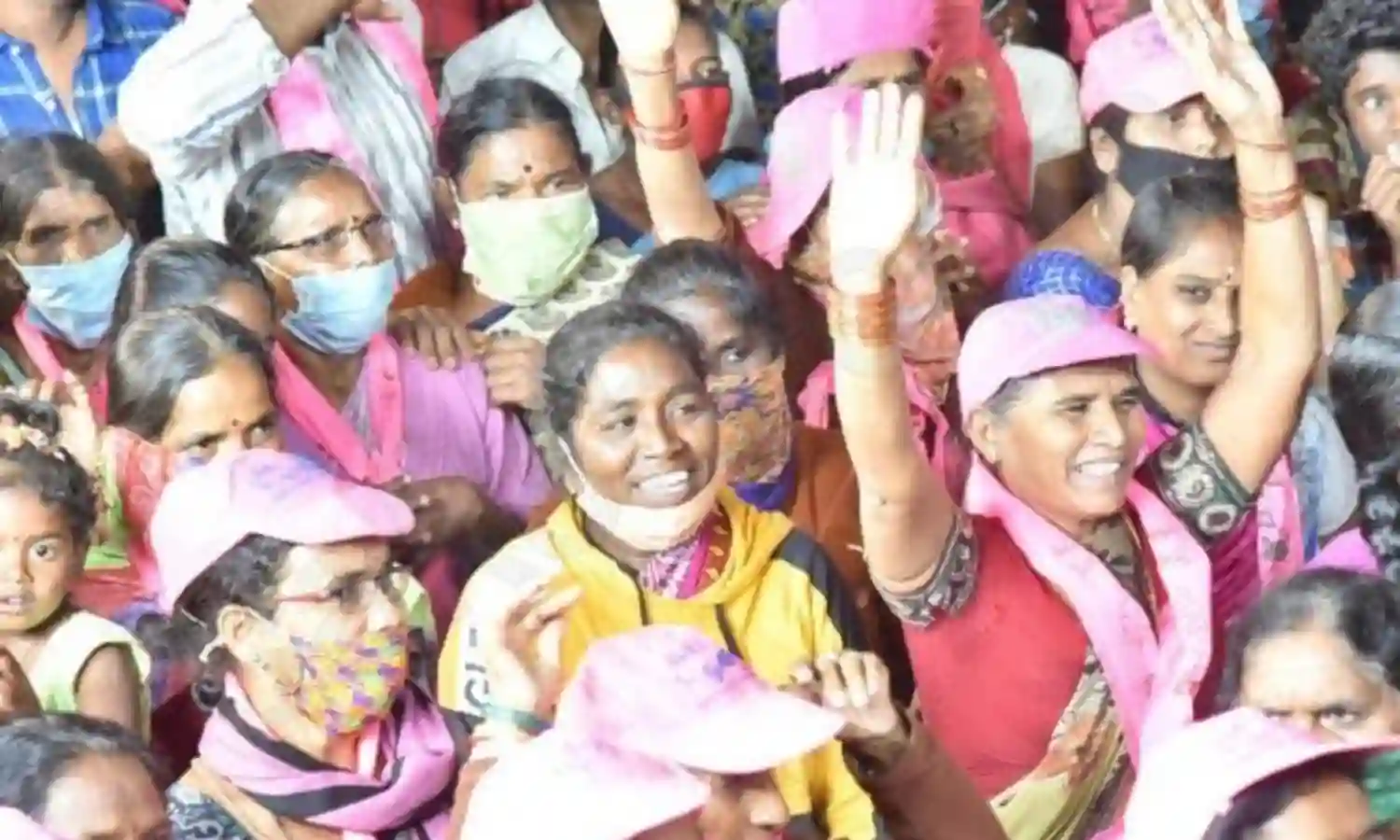BJP Shifts Focus from Congress Mukt Bharat to Regional Parties
Hyderabad civic polls new testing ground

After pushing for a “Congress Mukt Bharat”, the Bharatiya Janata Party has turned its focus on the regional parties which are perceived as the big hurdle in its efforts to become a pan India party with all others reduced to opposition at best.
In Bihar this was on ample display during the recent Assembly elections where the BJP cut its chief ally, the Janata Dal (United) to size by using the Lok Janshakti Party. Chirag Paswan mounted a tirade against Chief Minister Nitish Kumar and his party, substantially reducing the numbers. Kumar is back as Chief Minister courtesy the BJP and not his own strength this time around.
The BJP has moved in with a similar strategy into the Greater Hyderabad Municipal Corporation polls where the target is the Telangana Rashtra Samithi. The TRS led by chief minister K Chandrashekar Rao is facing fire from the BJP in these local polls, to compensate for the set back in the 2019 Lok Sabha polls here. The BJP campaign for the civic polls has been high voltage and very controversial, leaving no stone unturned in the divisive campaign. Asaduddin Owaisi, is also in the field helping the polarisation, a charge that he hotly denies of course.
The regional parties are slowing becoming aware of this, although green pastures for the BJP clearly remain.The ruling national party allies with the regional parties, and then uses this to eat into their base in the states. The BJP alliance with the Shiv Sena in Maharashtra cost the latter dear, forcing a parting of ways with the Shiv Sena now leading the charge against its former ally in the state.
The BJP had also allied with and used the AGP in Assam,the Indian National Lok Dal in Haryana, the Shiromani Akali Dal in Punjab, the DMK ,the AIADMK,the PMK, the MDMK in Tamil Nadu at different intervals, had shared power with the Janata Dal ( S) in Karnataka, allied with the TDP in Andhra Pradesh, the Biju Janata Dal in Orissa, the Trinamool Congress in West Bengal and the Peoples Democratic Party in Jammu and Kashmir.
Besides, it had backed the Bahujan Samaj Party in Uttar Pradesh and helped Mayawati to become the chief minister. It had worked along with Nitish Kumar to weaken weaken the RJD supremo Lalu Prasad Yadav in Bihar, more so when Kumar left the grand alliance mid term to join hands with the BJP and stay in government. In West Bengal too,the BJP has exploited Mamata Banerjee’s popularity against the Left front although now it will be targeting ‘Didi’ who is bereft of allies in the state.
The Congress’s failure to check the growth of the BJP at the national level, has now compelled the regional champions to assert their strength aggressively in the states as well as at the national level for sheer political survival. In Bihar the BJP did not emerge as the single largest party because of the RJD that formed a grand alliance with the Left parties and the Congress. The NDA managed to form the government, but is in power in Bihar with a strong aggressive opposition.
The Biju Janata Dal, the YSR Congress party and the TRS are recognised fence sitters playing footsie with the BJP in Parliament but the recent developments will compel them to review strategy in and outside the legislature.
In Maharashtra, the BJP’s attack is now focused more on the Shiv Sena than the NCP and the Congress as it wants to weaken the Shiv Sena brand of Hindutva and snatch its son of the soil plank.Aware of this, the Shiv Sena is keeping the alliance with the NCP and Congress alive despite differences, as its main effort now is to keep the BJP at bay.
The BJP threat is now visible to the regional parties, that are re-thinking strategy, and looking at old and new alliances for survival against the ascendant party.



